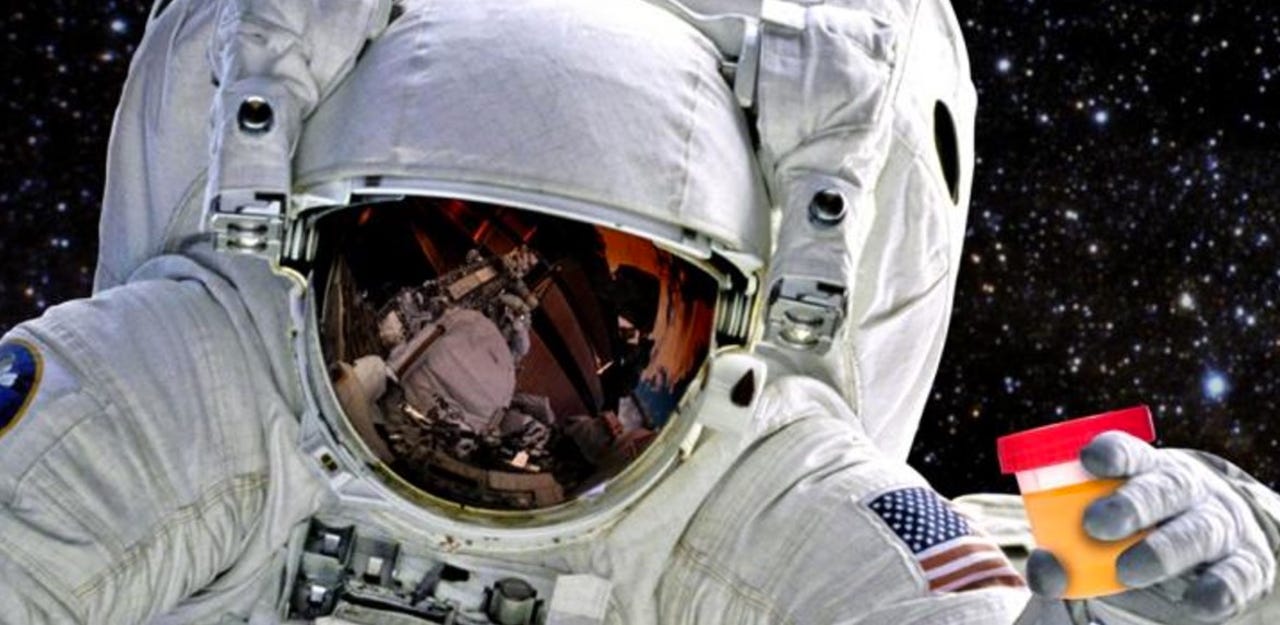Human waste to transform into plastic parts on long space journeys


Companies and researchers are clamoring for ways to make long space travel possible safe, and financially viable -- but could urine be the unexpected solution?
Featured
We've had SpaceX entrepreneur Elon Musk tell us that space travel to Mars is necessary to avoid a doomsday event, while renowned scientist Stephen Hawking believes that becoming a space-faring race is akin to "insurance" for humankind.
The problems associated with sending astronauts out to far away places, however, are complex. Assuming you have the vehicle, fuel, correct environment, and oxygen required, you still need to make sure that your human passengers are fed, have access to water, and have the tools necessary to complete whatever tasks they are issued.
To this end, long-haul space travel poses challenges. With limited space and only so many resources on board, how do you make sure astronauts have everything they need?
According to scientists from Clemson University, astronauts themselves could fill the gap in resources -- by donating their urine and exhaled carbon dioxide (CO2).
While presenting their research at the National Meeting & Exposition of the American Chemical Society (ACS) this month, the team, led by Mark Blenner, Ph.D., said that these products could be converted into chemicals in order to create plastic tools that may replace lost or broken ones.
Recycled urine is already utilized by astronauts on board the International Space Station (ISS), but by using molecules gained from human waste, it is possible to gain not only polyesters and material for printable plastics, but additional nutrients.
This could be a significant development in space-faring, as the conversion of such material could mean less fuel would be used to carry replacement tools and food, and astronauts may also be able to make longer journeys without being deprived of essential nutrients, such as omega-3 fatty acids.
Dubbed the "Atom economy," Blenner says such recycling will becoming "really important" for future missions if astronauts are going to make journeys which span beyond a few years.
Blenners' team are currently working on a biological system which includes strains of the yeast Yarrowia lipolytica, which requires both nitrogen and carbon to grow. This kind of yeast is able to absorb nitrogen from untreated urine, and carbon comes from the astronaut's exhaled breaths.
However, in the latter case, photosynthetic cyanobacteria or algae is necessary to use CO2.
One engineered yeast strains is able to produce omega-3 fatty acids, while another is now able to produce monomers for conversion to polyester polymers -- usable by 3D printers to print out replacement tools.
For now, the yeast is only able to produce a small amount of these useful materials, but the researchers are now developing ways to increase efficiency and output. However, they are also looking at ways the yeast could be used to advantage on Earth, such as for fish farms and aquaculture.
"We're learning that Y. lipolytica is quite a bit different than other yeast in their genetics and biochemical nature," Blenner says. "Every new organism has some amount of quirkiness that you have to focus on and understand better."
PREVIOUS AND RELATED COVERAGE
Elon Musk claims Mars colony dreams critical to avoid 'Doomsday' event
The entrepreneur says one million people sent safely to the planet can help us avoid extinction -- and has outlined how to do it.
SpaceX to send two private citizens 'beyond the moon' in 2018
Space tourism is here: Two private citizens will pay to fly to the moon in late-2018 and have already paid a significant deposit for the mission, Elon Musk says.
HPE, NASA to launch a supercomputer into space
The year-long experiment will test a supercomputer's ability to function in space, with the aim of sending one to Mars.